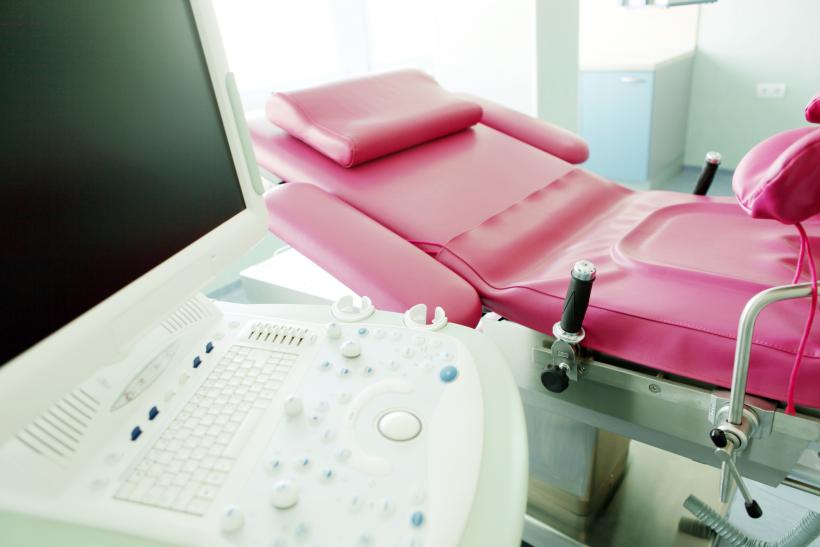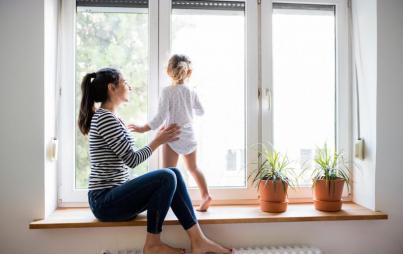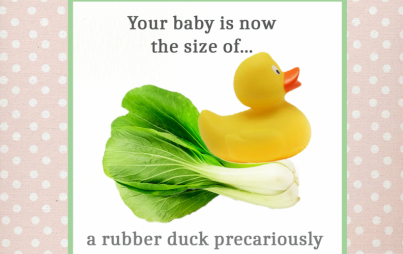
A blocked fallopian tube? Just when I thought I’d heard it all.
As I was lying on a hard table in the radiology department of my local hospital, a large screen looming over me, I couldn’t help but feel like this was all a big mistake. Why was I here having this unpronounceable procedure? (I mean, seriously — a hysterosalpingogram — WTF?) Did I really need it? And most of all, was it going to hurt? The answers to those questions were a) because you’ve been trying to conceive for six months and you’re not pregnant, b) yes, and c) hell, yes.
Let me back up a little: nearly two years ago, my husband and I resumed trying for our second baby. I say “resumed,” because we had tried the previous year and gotten pregnant surprisingly quickly given my age at the time (42). But then I had a miscarriage, and we took a little break. Once we got back in the saddle, so to speak, I was ready. I was taking prenatal vitamins, exercising, tracking my periods, using the ovulation predictor kits, all of it. I figured there wasn’t much more I could do.
Little did I know, my lady parts were working against me.
A couple of months passed. No big deal, I figured. I’m no spring chicken, so this is bound to take a little while. At my annual gyno visit, my doctor took some blood to test my ovarian reserves, which were found to be normal. Normal, that is, for a 43-year-old woman, which is to say, low. So after another month of my period annoying the crap out of me with its punctuality, I scheduled an appointment with a reproductive endocrinologist. Just the idea of it made me nervous since I wasn’t sure I could mentally, physically, or financially handle going through IVF, which I was positive the doctor would recommend. But I knew there had to be other options I could consider first, so off I went.
The meeting with the fertility doc was more like a therapy session than anything else. She wanted my complete obstetrical history, so I had to regale her with the tale of my daughter’s harrowing birth, and then my miscarriage. Truthfully, the miscarriage hadn’t devastated me at the time — it happened in the first trimester, and we had found out early on there might be a problem — but just telling the story out loud brought on the waterworks. Once we got that out of the way, she said there were a couple of tests that could diagnose why I wasn’t getting pregnant. Aside from the fact that I’m old AF? I wondered to myself.
The doctor did a sonogram and found that everything looked normal with my ovaries. She took several vials of blood for testing and then she told me I needed to schedule the aforementioned hysterosalpingogram, which involved injecting dye into my uterus to check for anomalies or something to that effect. I couldn’t really keep up with all the jargon, and it sounded scary, and I started to immediately regret even making this appointment. But I took a deep breath and scheduled the HSG because what choice did I really have?
A 43-year-old woman can only pee on ovulation sticks for so long before she has to explore other options.
So, cut to me lying on the hard hospital table with the looming screen, getting an HSG, and wondering if it would hurt. The doctor told me to expect some cramping when the dye went in, and that I might have some spotting over the next couple days. He put this stuff on me to clean the area, which he told me would be “very cold and wet,” and indeed it was. Then a speculum, then a catheter, and then he took a look. I felt some minor cramping and figured that was the dye going in. Not too bad.
You Might Also Like: When You Feel Like You're Falling Apart, You're Not Alone
Then they moved the x-ray machine over me, and I figured it was picture time. Then he said something about the dye going in and that I might have some cramping, though it was a bit hard to hear him. I thought, Wait, the dye hasn’t gone in yet?, just as I felt nightmarish pain radiating throughout my pelvis. The nurse asked, “Are you okay?” and I’m grimacing and gripping the sides of the table, thinking, Is this some kind of joke?
Just as I was asking her how long this fresh hell would last, I heard the doctor murmur something about the right tube being open and the left being closed, and then he announced it was over. Hallelujah.
But… left tube closed? What was he talking about?
“Your fallopian tubes were blocked,” he explained. Wait, I thought to myself, that’s a thing?
“I was able to open the right one with the dye,” the doctor continued, “but the left is still closed. There’s a procedure we can do for that another time if you’re interested.”
Holy crap. A blocked fallopian tube? Just when I thought I’d heard it all. As far as I knew, none of my friends had encountered this, or if they had, they certainly hadn’t told me about it. No wonder I wasn’t getting pregnant; hello! My eggs were floating around with no sperm to greet them. Then, of course, I was bummed that the doc hadn’t been able to get the other tube open. If he had injected just a little more dye!? Come on, dude, help a lady out!
The good news was that the next procedure I had to open the left tube, a tubal recanalization, was a snap compared to the HSG. It was a very similar procedure, but instead of just flooding dye throughout my uterus, he put in a catheter and injected just the right amount into the left tube exactly where it needed to be, and I barely felt a thing. And it worked! Now I had two open tubes, and I was ready to conquer the world.
Aside from the fact that my 44th birthday was looming, I felt hopeful.
Three months later, after one failed round of IUI and a dash of Clomid, my fallopian tubes 2.0 did their job. As I write this, my five-month-old son is snoozing on me in the Bjorn (a bad habit we’ve gotten into that I promise to break soon). Evidently, my clogged tubes were the problem.
But how is it that I’d never even heard of blocked fallopian tubes? I have several friends who’ve navigated the world of IVF, and I thought I knew a lot about infertility. It turns out I didn’t even know about this prevalent problem. As much as women, especially those of advanced maternal age, talk about conception, fertility, pregnancy (or the lack thereof), we don’t actually know much about it, and we don’t even know how much we don’t know. When you get down to it, all we really know is that we are peeing on a stick, and so often seeing that lonely single line that can ruin your whole month. Trying to land a good, robust, upstanding sperm in a happy, healthy egg genuinely seems like aiming at a moving target. We can only hope that we learn what the problem and solution are in time to still have a baby.
So who knows how long my tubes had been blocked, how they got blocked, or what they got blocked with? (Debris, my doctor had told me. Uhhhh… OK.) Regardless, I’m so glad I went to the fertility specialist.
As scary as it was to face my fertility issues (which were minor compared to what so many women go through), it felt empowering to know what was going on with my reproductive system.
The experience taught me a lot, and I got to have another baby, for which I feel fortunate and grateful, especially given my age.
Now, if someone could just tell me how to pronounce hysterosalpingogram.








